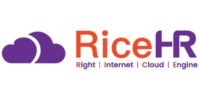Introduction:
- In today’s dynamic and fast-paced business environment, organizations are constantly seeking ways to improve efficiency, productivity, and employee satisfaction.
- One of the key areas where organizations can make significant improvements is in the realm of human resources (HR) management.
- Traditional HR processes, often characterized by manual paperwork and time-consuming administrative tasks, can hinder employee engagement and productivity.
- Employee Self-Service (ESS) portals offer a transformative solution to these challenges.
- ESS portals provide employees with a secure and centralized online platform to access and manage their HR-related information and processes.
- This empowers employees to take ownership of their HR tasks, reducing the burden on HR departments and enhancing overall employee satisfaction.
Benefits of ESS Portals
ESS portals offer a myriad of benefits for both organizations and employees. Here are some of the key advantages:
Increased Employee Engagement:
ESS portals provide employees with a sense of control and autonomy over their HR matters, fostering greater engagement and satisfaction.
Improved Efficiency and Productivity:
By streamlining HR processes and reducing administrative tasks, ESS portals enable employees to focus on their core responsibilities, boosting productivity.
Reduced HR Costs:
ESS portals automate many HR tasks, reducing the need for manual intervention and associated costs.
Enhanced Employee Satisfaction:
Access to real-time HR information and the ability to manage tasks independently contribute to higher employee satisfaction.
Key Features of ESS Portals
ESS portals encompass a range of features that empower employees to manage their HR needs effectively. These features may include:
- Personal Information Management: Employees can update their personal details, contact information, and emergency contact information.
- Paystub Access: Employees can view and download their current and past paystubs, ensuring transparency in payroll matters.
- Time-Off Management: Employees can submit time-off requests, track their leave balances, and view approval status.
- Benefits Management: Employees can enroll in benefits plans, make changes to their elections, and access benefits information.
- Performance Management: Employees can view their performance reviews, set goals, and track their progress.
- Training and Development: Employees can access training resources, enroll in courses, and track their progress.
Implementing an ESS Portal
To successfully implement an ESS portal, organizations should consider the following steps:
- Define Objectives: Clearly define the goals and objectives for implementing an ESS portal, aligning them with the organization’s overall HR strategy.
- Choose the Right Solution: Evaluate various ESS portal solutions, considering factors such as ease of use, functionality, security, and integration with existing HR systems.
- Involve Employees: Engage employees throughout the implementation process, gathering their feedback and addressing their concerns.
- Provide Training: Offer comprehensive training to employees on how to use the ESS portal, ensuring they are comfortable and confident with its features.
- Continuous Improvement: Continuously monitor and evaluate the ESS portal’s effectiveness, making improvements as needed to enhance its user experience and functionality.
ESS Portals: A Path to a More Empowered Workforce
- ESS portals represent a significant step forward in the evolution of HR management.
- By empowering employees to take control of their HR matters, organizations can reap numerous benefits, including increased employee engagement, improved productivity, reduced costs, and higher employee satisfaction.
- As organizations embrace the digital transformation of HR practices, ESS portals are poised to play a pivotal role in shaping a more empowered and productive workforce.
